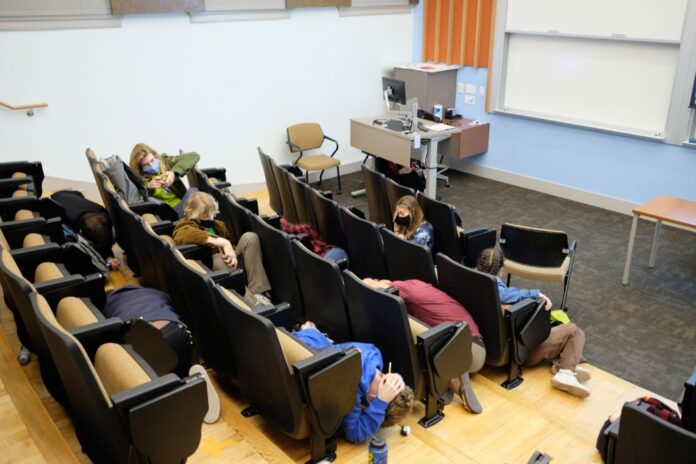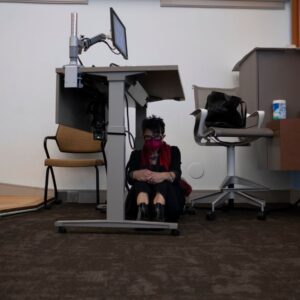
Located in Southern California, Occidental lies near many fault zones between tectonic plates. In order to be prepared when an earthquake strikes, Occidental College participated in the Great ShakeOut Oct. 21. The Great ShakeOut is an annual, international event in order to raise awareness about earthquake precautions and protections.
The Great ShakeOut advises table drills. During an earthquake, a person is supposed to drop to the ground, take cover under a sturdy desk or table and hold on to the legs of the table until the shaking stops. It is not recommended to go outdoors, since falling objects and breaking glass cause most earthquake-related injuries.
“It’s imperative that people practice what they will do in the event of an emergency so they are prepared for the unexpected,” Tanksley said.
This year, Occidental also took advantage of the Great ShakeOut drill to test their Oxy Alert system, according to Director of Campus Safety Rick Tanksley. According to Tanksley, the Oxy Alert system sends a phone call, text message and email to alert students when there is a safety issue on campus. He said there are also alarms on the north and south ends of campus that sound. After testing Thursday, Tanksley said the Oxy Alert system is working effectively.
Callion Banz (senior), who grew up in LA says that he has had to practice earthquake drills in school his entire life, and the repetitive practice has made him feel confident that in an emergency, he would know what to do.
“We would have to go under the tables and hold on. We were told not to go outside, because that is where it’s most dangerous,” Banz said. “I’ve felt a few earthquakes before, and my first instinct is always to get under a table now.”
According to Occidental geology professor Ann Blythe, a few key ways people can prepare include keeping a case of water and non-perishable foods in a dorm room or house, and not placing beds directly against or underneath windows.
“An earthquake in Los Angeles would very likely take out the aqueduct for at least a week, which means everyone would be without water and food during that time,” Blythe said.
Additionally, according to Blythe, keeping a first aid kit and knowing how to use it is imperative, because it’s likely that hospitals would become overwhelmed following a large earthquake.

“Even things like broken legs will be considered low priority for hospitals when they are overwhelmed, which is why a robust medical kit is so important to have,” Blythe said.
York Boulevard is built on top of the Raymond Fault line, which has been responsible for 5.0 magnitude earthquakes as recent as 1988. According to Blythe, being so close to a fault zone means that students need to take extra responsibility to be prepared, and check with Campus Safety about specific recommendations for dorm safety.
There are also many other major fault zones in the areas surrounding Occidental, including the Northridge Fault zone and the San Andreas Fault zone, according to Blythe. While these zones are less likely to cause immediate structural damage to Occidental’s campus, it is likely that they would severely damage LA’s infrastructure.
To prepare for the potential natural disasters that Occidental’s ecological landscapes present, the college created a safety response team in 2018, according to Tanksley.
“We have created a team composed of staff members from different departments, such as Facilities Management and ITS [Information Technology Services], in order to form a comprehensive response team. This team is responsible for creating adequate responses to a multitude of different scenarios,” Tanksley said.
In addition to sending out Oxy Alerts, Tanksley said the team is working on creating a more thorough website where people can find the plans for the various safety response scenarios.
“We can write all we want about them, but it’s important that people know what to do in the moment. In the future, we want to conduct at least one active drill a year where people are required to stop class time and practice their safety responses,” Tanksley said.
![]()



































